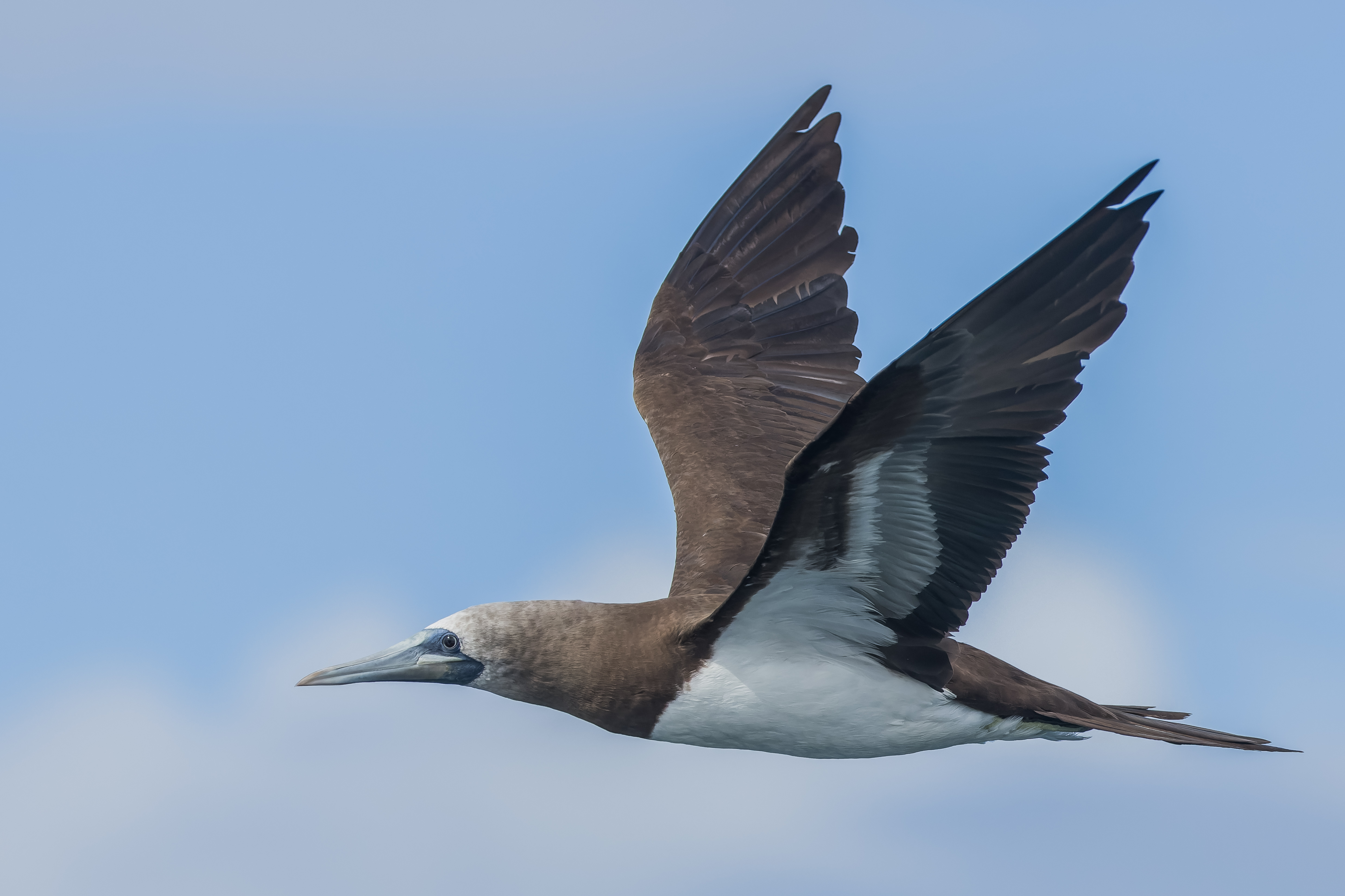Cocos Booby
Sula brewsteri brewsteri
 ·
Sula brewsteri brewsteri
·
21-02-2023 · Joachim Bertrands
·
Sula brewsteri brewsteri
·
21-02-2023 · Joachim Bertrands
| Datum | 21 February 2023 |
|---|---|
| Locatie | Sea of Cortez, Sonora, Mexico |
| Fotograaf |
|
| Bekeken | 2642 × |
Brewster's Booby - een heel mooi taxon van de Pacifische kust van met name Mexico. Vorige week enkele exemplaren van gezien tijdens een boottocht voor de kust van Puerto Penasco. De mannetjes krijgen een flink blauwe snavelbasis alsook zilveren kopveren. |
Discussie
Max Berlijn
·
28 February 2023 22:24
Nice, ook gezien tijdens onze trip vanuit Manzanillo in April 2022. Splitkansen??
Dušan Brinkhuizen
·
28 February 2023 22:39
etesiaca ziet er nagenoeg hetzelfde uit...
Jan Hein van Steenis
·
1 March 2023 10:59
@Max: De splitkansen zijn natuurlijk afhankelijk van welk soortconcept je aanhangt.
"The Eastern Pacific population diverged from all other populations approximately one million years ago and exhibits a distinct male plumage, relative to other populations.
However, recent gene flow from the Indo-Central Pacific into the Eastern Pacific appears to have occurred, suggesting that approximately one million years of genetic isolation and divergence in male plumage colour are not sufficient to prevent interbreeding."
MORRIS-POCOCK, J.A., ANDERSON, D.J. and FRIESEN, V.L. (2011), Mechanisms of global diversification in the brown booby (Sula leucogaster) revealed by uniting statistical phylogeographic and multilocus phylogenetic methods. Molecular Ecology, 20: 2835-2850. https://doi.org/10.1111/j.1365-294X.2011.05132.x
George Sangster
·
1 March 2023 11:04, gewijzigd 1 March 2023 11:09
Er is voor - zover ik weet - nog geen voorstel gedaan om Bruine Gent te splitsen. Er is wel DNA bewijs dat daarbij zou kunnen helpen:
Morris-Pocock, JA, Anderson, DJ & Friesen, VL 2011. Mechanisms of global diversification in the brown booby (Sula leucogaster) revealed by uniting statistical phylogeographic and multilocus phylogenetic methods. Mol. Ecol. 20: 2835–2850.
In deze studie vormden de Bruine Genten wereldwijd vier geografisch gescheiden groepen. De vogels in de oostelijke Pacifische Oceaan waren de meest divergente populatie.
"Our results support the division of global brown booby populations into four major genetic groups that correspond to major oceanographic areas: the (i) Caribbean Sea, (ii) Central Atlantic Ocean, (iii) Indian and Central Pacific Oceans and (iv) Eastern Pacific Ocean. These clusters also closely match previously defined subspecies within brown boobies (Nelson 1978): S. l. leucogaster in the Caribbean and Central Atlantic (clusters 1 and 2, which are sister taxa on the population tree; Fig. 4), S. l. plotus in the Indo-Central Pacific (cluster 3), and S. l. brewsteri in the Eastern Pacific (cluster 4). Excluding individuals from Isla San Benedicto, recent gene flow (last few generations) between any of the major groups appears to be absent or limited." (p. 2845)
George Sangster
·
1 March 2023 11:07
Jan Hein was mij net voor.
Jan Hein van Steenis
·
7 March 2023 19:24
In Howell & Zufelt (Oceanic Birds of the World) wordt de Brown Booby natuurlijk (zoals ALLES) gesplit – in drie soorten. Deze is dan Brewster's Brown Booby, Atlantic en Indo-Pacific de twee andere. Ik denk dat twee (Brewster's vs. de rest) in de toekomst niet onmogelijk is.
Joachim Bertrands
·
7 March 2023 20:49
Ssp. etesiaca dan in dat scenario wellicht een lump met brewsteri? Zoals Dusan schreef amper uit elkaar te houden die twee...
Jan Hein van Steenis
·
7 March 2023 23:46
Ja inderdaad, ik geloof niet dat er veel reden is om twee ondersoorten te erkennen...
Gebruikers van het forum gaan akkoord met de forumregels.
